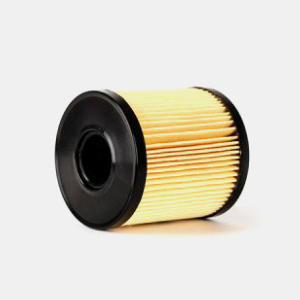-
 Afrikaans
Afrikaans -
 Albanian
Albanian -
 Amharic
Amharic -
 Arabic
Arabic -
 Armenian
Armenian -
 Azerbaijani
Azerbaijani -
 Basque
Basque -
 Belarusian
Belarusian -
 Bengali
Bengali -
 Bosnian
Bosnian -
 Bulgarian
Bulgarian -
 Catalan
Catalan -
 Cebuano
Cebuano -
 China
China -
 Corsican
Corsican -
 Croatian
Croatian -
 Czech
Czech -
 Danish
Danish -
 Dutch
Dutch -
 English
English -
 Esperanto
Esperanto -
 Estonian
Estonian -
 Finnish
Finnish -
 French
French -
 Frisian
Frisian -
 Galician
Galician -
 Georgian
Georgian -
 German
German -
 Greek
Greek -
 Gujarati
Gujarati -
 Haitian Creole
Haitian Creole -
 hausa
hausa -
 hawaiian
hawaiian -
 Hebrew
Hebrew -
 Hindi
Hindi -
 Miao
Miao -
 Hungarian
Hungarian -
 Icelandic
Icelandic -
 igbo
igbo -
 Indonesian
Indonesian -
 irish
irish -
 Italian
Italian -
 Japanese
Japanese -
 Javanese
Javanese -
 Kannada
Kannada -
 kazakh
kazakh -
 Khmer
Khmer -
 Rwandese
Rwandese -
 Korean
Korean -
 Kurdish
Kurdish -
 Kyrgyz
Kyrgyz -
 Lao
Lao -
 Latin
Latin -
 Latvian
Latvian -
 Lithuanian
Lithuanian -
 Luxembourgish
Luxembourgish -
 Macedonian
Macedonian -
 Malgashi
Malgashi -
 Malay
Malay -
 Malayalam
Malayalam -
 Maltese
Maltese -
 Maori
Maori -
 Marathi
Marathi -
 Mongolian
Mongolian -
 Myanmar
Myanmar -
 Nepali
Nepali -
 Norwegian
Norwegian -
 Norwegian
Norwegian -
 Occitan
Occitan -
 Pashto
Pashto -
 Persian
Persian -
 Polish
Polish -
 Portuguese
Portuguese -
 Punjabi
Punjabi -
 Romanian
Romanian -
 Russian
Russian -
 Samoan
Samoan -
 Scottish Gaelic
Scottish Gaelic -
 Serbian
Serbian -
 Sesotho
Sesotho -
 Shona
Shona -
 Sindhi
Sindhi -
 Sinhala
Sinhala -
 Slovak
Slovak -
 Slovenian
Slovenian -
 Somali
Somali -
 Spanish
Spanish -
 Sundanese
Sundanese -
 Swahili
Swahili -
 Swedish
Swedish -
 Tagalog
Tagalog -
 Tajik
Tajik -
 Tamil
Tamil -
 Tatar
Tatar -
 Telugu
Telugu -
 Thai
Thai -
 Turkish
Turkish -
 Turkmen
Turkmen -
 Ukrainian
Ukrainian -
 Urdu
Urdu -
 Uighur
Uighur -
 Uzbek
Uzbek -
 Vietnamese
Vietnamese -
 Welsh
Welsh -
 Bantu
Bantu -
 Yiddish
Yiddish -
 Yoruba
Yoruba -
 Zulu
Zulu
Stainless Steel Woven Mesh for Durable Filtration and Versatile Applications
The Versatility of Stainless Steel Woven Mesh Applications and Benefits
Stainless steel woven mesh has become a cornerstone in various industries due to its remarkable properties and versatility. This unique material, created through the interlacing of stainless steel wires, has a myriad of applications that cater to different market needs. From architectural uses to industrial solutions, stainless steel woven mesh delivers both functionality and aesthetic appeal.
Properties of Stainless Steel Woven Mesh
One of the primary advantages of stainless steel woven mesh is its corrosion resistance. Unlike other metals that deteriorate over time when exposed to moisture and chemicals, stainless steel maintains its integrity, making it ideal for use in challenging environments. This property is particularly beneficial in industries such as food processing, pharmaceuticals, and outdoor applications where hygiene and longevity are paramount.
In addition to its durability, stainless steel woven mesh is also known for its strength and rigidity. Its woven structure allows it to withstand high tensile loads without losing its shape, making it suitable for a variety of demanding applications. Furthermore, stainless steel mesh can be customized in terms of wire diameter, opening size, and weave pattern, providing designers and engineers with the flexibility to meet specific requirements.
Applications in Various Industries
Stainless steel woven mesh finds utility across diverse sectors. In architecture and construction, it is often used for facades, balustrades, and interior design elements. Its aesthetic appeal combined with functionality allows architects to create visually striking structures with effective light control, screening, and ventilation.
stainless woven mesh

In the food and beverage industry, stainless steel woven mesh plays a crucial role in filtration systems, conveyor belts, and food processing equipment. Its non-toxic and easy-to-clean properties make it an excellent choice for maintaining hygienic standards in food production. Similarly, in the pharmaceutical industry, stainless steel mesh is used in equipment that requires sanitary conditions, ensuring that products are manufactured without contamination.
The automotive and aerospace industries also benefit from stainless steel woven mesh, where it is employed in various applications ranging from filtration to soundproofing. The high strength-to-weight ratio of stainless steel mesh makes it an ideal candidate for manufacturing components that require durability without adding excessive weight.
Environmental Benefits
Choosing stainless steel woven mesh can also be an environmentally conscious decision. Stainless steel is recyclable, making it a sustainable material choice for manufacturers and consumers. By utilizing stainless steel in products and systems, industries can reduce their carbon footprint and promote a circular economy.
Moreover, the longevity and durability of stainless steel woven mesh mean that products made from this material often have a longer lifecycle. This aspect reduces the need for frequent replacements, further contributing to environmental sustainability. Switching to stainless steel mesh can lead to lower waste generation and less resource consumption over time.
Conclusion
In summary, stainless steel woven mesh is a remarkable material that has made significant contributions to various sectors. Its impressive properties—such as corrosion resistance, strength, and aesthetic versatility—make it an ideal choice for both functional and design-oriented applications. As industries continue to innovate and prioritize sustainability, stainless steel woven mesh will undoubtedly remain relevant, proving that the blend of functionality and aesthetics can lead to enduring solutions for modern challenges. Whether in architecture, food processing, or beyond, the future of stainless steel woven mesh looks bright, underscoring its essential role in our built environment and industrial processes.
-
Shipping Plastic Bags for Every NeedNewsJul.24,2025
-
Safety Netting: Your Shield in ConstructionNewsJul.24,2025
-
Plastic Mesh Netting for Everyday UseNewsJul.24,2025
-
Nylon Netting for Every UseNewsJul.24,2025
-
Mesh Breeder Box for Fish TanksNewsJul.24,2025
-
Expanded Steel Mesh Offers Durable VersatilityNewsJul.24,2025











